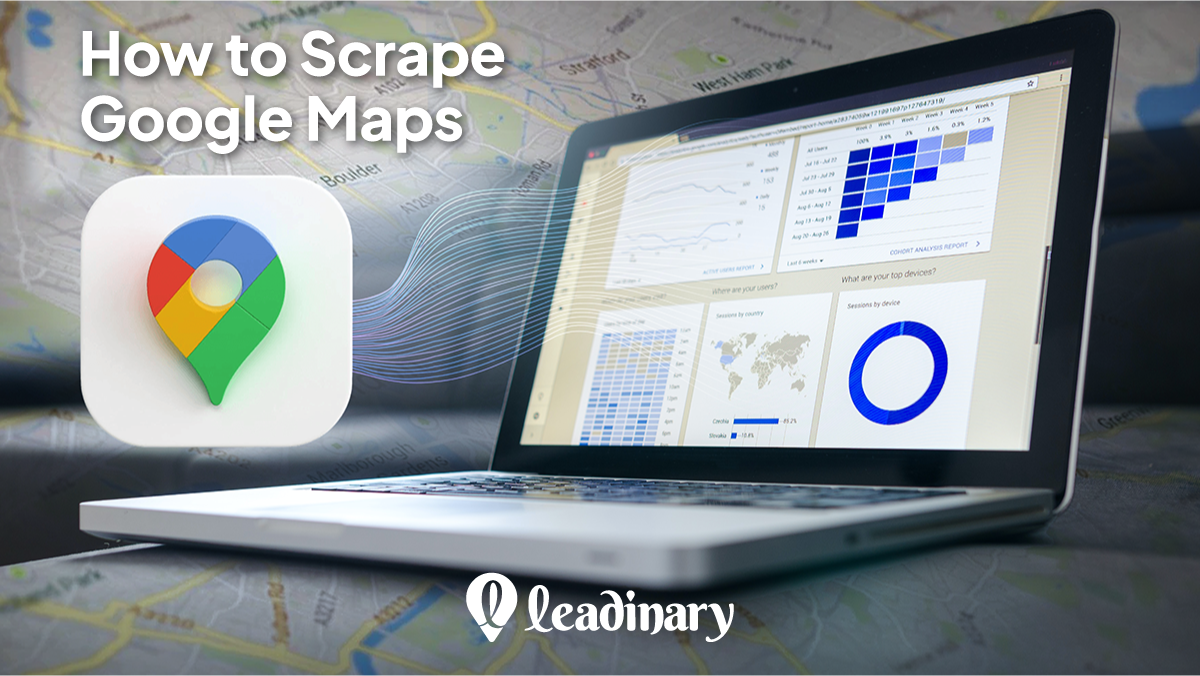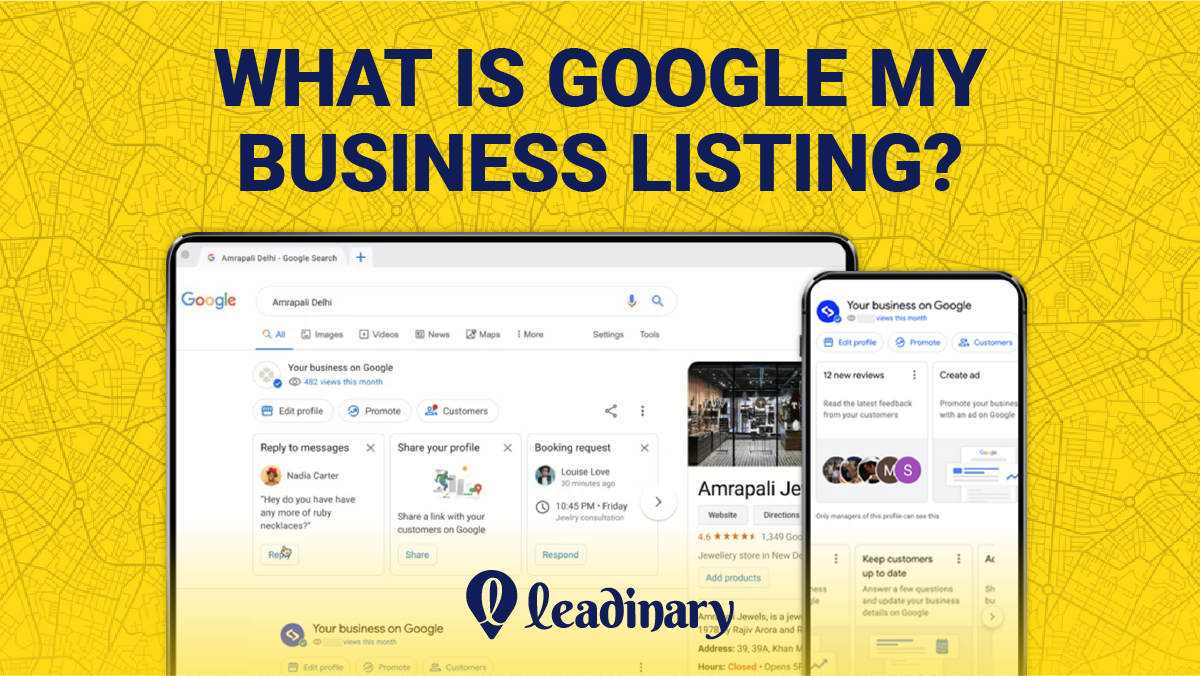Having an online presence is essential for any business, and having an accurate and up-to-date business listing helps customers find your website, contact information, and other key details. With the help of Google My Business, you can create an online presence for your business and increase its visibility on Google Search and Maps. However, optimizing your listing requires some work and know-how, and that’s where a Google My Business checklist comes in. In this blog post, we’ll provide a comprehensive checklist for Google My Business optimization.
Google My Business Optimization Checklist
Let’s get started on your Google My Business checklist and take the first step to make sure your online presence is the best it can be!

Identify Local Competitors
Identifying local competitors is an important step in optimizing your Google My Business listing. Local competitors are businesses that provide similar products or services as you do and operate in the same geographic location as you. By identifying your local competitors, you can get a better understanding of what your potential customers are searching for, and what your competitors are offering.
There are several ways to identify your local competitors. One of the simplest ways is to search Google Maps or Google search using relevant keywords that describe your business. You can also use tools like SEMrush or Moz Local to get a comprehensive list of businesses in your area that offers similar services or products.
Once you have a list of your local competitors, you can use their Google My Business profiles to see what they are doing right and what they are doing wrong. This information will give you an idea of what you need to do to optimize your own Google My Business listing and stand out from the competition.
It is important to keep an eye on your local competitors regularly, as their Google My Business listings can change over time.
For example, they may add new services, update their hours of operation, or change their contact information. By monitoring your competitors’ Google My Business listings, you can stay on top of any changes that may impact your business and adjust your listing accordingly.
Identifying local competitors is a crucial step in optimizing your Google My Business listing. By understanding what your competitors are offering and what they are doing right and wrong, you can make the necessary changes to your listing to stand out from the competition and attract more customers.
Audit the Competition
Auditing your competitors can be a valuable tool in optimizing your Google My Business (GMB) listing. The following steps can help you understand your competitors’ strategies and identify areas where you can improve your listing.
Research Your Competition
Start by identifying your top competitors in your industry and location. You can do this by searching for your keywords on Google and noting the businesses that appear in the map pack. Make a list of these competitors and their GMB listings.
Review their GMB Profiles
Take a close look at each competitor’s GMB listing, including their business name, address, phone number, website, photos, reviews, and Q&A. Make note of any information that stands out and compare it to your listing.
Analyze their Keywords
Look at the keywords each competitor is targeting in their GMB listing. Pay attention to their business name, category, and description. You can use tools like SEMrush or Moz to see which keywords they are ranking for and how they compare to your ranking.
Evaluate their Online Presence
Check the competitor’s website and other online assets, such as their social media accounts, to see how they are promoting their business. Take note of any promotions or offers they are using to attract customers.
Assess their Reviews
Reviews play a crucial role in a GMB listing, so take the time to read through your competitors’ reviews to see what customers are saying about them. Consider the language and tone of the reviews and look for any patterns in customer feedback.
By auditing your competitors, you can gain a better understanding of their strengths and weaknesses, and identify opportunities to improve your own GMB listing. This information can help you optimize your listing to attract more customers, stand out from the competition, and increase your online visibility.
Proximity Audit
A Proximity Audit is a process of evaluating the performance of your Google My Business (GMB) listing about your physical location. By performing a proximity audit, you can identify any issues with your GMB listing that may be affecting your visibility and ranking in local search results. Here are the steps to perform a proximity audit:
Verify your Business Location
Ensure that your business location is accurate and up-to-date on your GMB listing. This information is critical for determining your proximity to potential customers and your visibility in local search results.
Analyze your Google Maps Listing
Check the map listing for your business and ensure that it accurately reflects your location. If there are any errors, make sure to correct them so that your listing accurately reflects your physical location.
Check for Consistency
Make sure that the address and phone number on your GMB listing match the information listed on your website and other online directories. Inconsistent information can confuse potential customers and negatively impact your ranking in local search results.
Review Proximity-based Keywords
Identify keywords that are relevant to your business and location, and check if they are included in your GMB listing. Use these keywords in your business description, categories, and photos to help improve your visibility in local search results.
Monitor your Proximity-based Search Rankings
Keep track of your ranking in local search results for proximity-based keywords. This information can help you identify any changes in your visibility and ranking, and make changes to your GMB listing as needed.
By performing a proximity audit, you can identify any issues with your GMB listing that may be impacting your visibility and ranking in local search results. By making the necessary changes, you can help improve the visibility and ranking of your GMB listing, and ultimately drive more traffic to your business.
Listing Title
Choosing the right title for your Google My Business (GMB) listing is crucial to optimizing your visibility on Google and attracting more customers. Here are a few tips to help you choose the perfect title for your GMB listing:
- Use your business name: Your business name should be included in the title of your GMB listing. This helps to establish your brand and increase recognition.
- Include keywords: Use relevant keywords in your title to help Google understand what your business is all about. Consider including keywords related to the products or services you offer, as well as the location where you do business.
- Keep it concise: Your title should be concise and easy to read. Avoid using overly long or complicated phrases, as this can make it difficult for Google to understand what your business is all about.
- Use proper capitalization: Capitalize the first letter of each word in your title, including your business name. This makes it easier to read and can help to make your listing stand out.
- Avoid duplicates: Make sure your title is unique and not duplicated from other listings. This will help to prevent confusion and ensure that your listing is accurately representing your business.
By following these tips, you can choose a title for your GMB listing that accurately represents your business, is easy to read, and helps to improve your visibility on Google.
Optimize GMB categories
GMB categories help your business appear in relevant search results and improve the accuracy of your business information on Google Maps. Here are a few steps to help you optimize your GMB categories:
Choose the Most Relevant Categories
The categories you select should accurately reflect the products or services you offer. Google provides a list of categories to choose from, so make sure to select the ones that are most relevant to your business.
Use Primary and Secondary Categories
Google allows you to select one primary category and up to 9 secondary categories for your business. Make sure to use both to provide a comprehensive representation of your business.
Use Keywords in Your Categories
Google uses your category choices to help match your business to relevant searches. Make sure to include keywords in your category selections that accurately reflect your business and what you offer.
Keep your Categories Updated
Make sure to regularly review and update your categories to keep them accurate and up-to-date. For example, if you add a new product or service to your business, make sure to update your categories accordingly.
By following these steps, you can optimize your GMB categories and improve your local search presence on Google. It’s important to keep your categories accurate and up-to-date to ensure your business appears in relevant search results and provides accurate information to potential customers.
Website Links
By including website links in your GMB profile, you provide potential customers with easy access to your website and other online assets, which can increase brand awareness and drive traffic to your site. This can help you to improve your online presence, reach a wider audience, and ultimately, generate more business.
When adding website links to your GMB profile, it’s important to choose links that are relevant to your business and that offer value to your target audience.
For example, if you run a restaurant, you might include links to your menu, online ordering system, and your location on Google Maps. If you run an e-commerce store, you could include links to your product categories, shipping information, and your company’s About Us page.
It’s also important to ensure that the links you include in your GMB profile are accurate and up-to-date. If a link is broken, it can lead to a negative user experience and potentially harm your business’s reputation. So, it’s a good idea to periodically check your links to make sure they’re working properly.
LocalBusiness Markup
Local Business Markup is a type of structured data that provides additional information about a business to search engines. By adding Local Business Markup to your website, you can help search engines understand the important details about your business, such as your business name, address, phone number, and type of business. This information can then be displayed on search engine results pages (SERPs) or Google Maps, making it easier for users to find your business.
Incorporating Local Business Markup into your website can also help optimize your Google My Business (GMB) listing. GMB is a free listing provided by Google that allows businesses to manage their online presence across Google, including Google Search and Google Maps. By adding Local Business Markup to your website, you can provide Google with accurate and up-to-date information about your business, which can help improve the visibility of your GMB listing.
In addition to improving your GMB listing, Local Business Markup can also have a positive impact on your search engine optimization (SEO) efforts. Search engines use structured data to better understand the content of a page and its relevance to specific queries.
By adding Local Business Markup to your website, you can provide search engines with valuable information about your business that can help your website rank higher in search results for relevant keywords.
To implement Local Business Markup on your website, you will need to add code to your website that conforms to the schema.org standard.
There are several tools available that can help you generate the code and test it for accuracy, including Google’s Structured Data Markup Helper. Once the code has been added to your website, it’s important to regularly check your GMB listing to ensure the information displayed is accurate and up-to-date.
Google Reviews
Google Reviews play a significant role in optimizing your Google My Business (GMB) listing. They help in establishing your business’s online presence, improve its visibility, and boost its reputation.
Google uses user reviews as a ranking factor when displaying search results. Positive reviews can increase your business’s visibility, making it more likely for potential customers to find your GMB listing when searching for products or services you offer.
Google reviews provide valuable insights into what customers think about your business, helping you to identify areas for improvement and make changes that can increase customer satisfaction.
To get the most out of your GMB listing, you should encourage your customers to leave reviews. You can do this by asking them to share their experience after they’ve done business with you, or by providing links to your GMB listing in your email signature, website, or social media profiles. Responding to reviews in a timely and professional manner can also help to build trust and improve your business’s reputation.
3rd Party Reviews
Third-party reviews are written by customers who have used your products or services and have taken the time to provide feedback on their experience. This feedback provides valuable information that can help you improve your business and attract new customers.
One of the most important ways third-party reviews impact your Google My Business listing is through search engine optimization (SEO). Google takes into account the number and quality of reviews when ranking your business in its search results.
Positive reviews can increase your ranking, making it easier for potential customers to find you. On the other hand, negative reviews can hurt your ranking and make it harder for people to find your business.
In addition to impacting your SEO, third-party reviews can also provide valuable information about what customers like and don’t like about your business. This information can help you identify areas for improvement and make changes that will enhance the customer experience.
For example, if several customers mention that your wait times are too long, you could invest in additional staff or technology to speed up the process.
Third-party reviews can also help build your brand and reputation. Customers are more likely to trust a business that has positive reviews from others, and these reviews can provide valuable social proof that can influence purchasing decisions.
Responding to negative reviews in a professional and empathetic manner can show customers that you care about their experience and are committed to making things right.
Social Profiles
By linking your social profiles to your GMB listing, you can increase the visibility of your business and improve your online reputation.
One of the benefits of linking social profiles to your GMB listing is that it provides more information about your business to potential customers. This information includes the latest updates, photos, and reviews of your business. By providing a comprehensive view of your business, you can increase customer trust and build a strong online reputation.
Linking your social profiles to your GMB listing helps you to connect with your audience and engage with them in real time. You can respond to customer reviews, answer questions, and share updates and promotions through your GMB listing and social profiles. By engaging with your customers, you can build customer loyalty and improve your overall customer satisfaction.
Linking your social profiles to your GMB listing is a crucial step in optimizing your online presence and improving your search engine ranking. It provides more information about your business, helps you connect with your audience, and increases customer trust and satisfaction.
Make sure to regularly update your social profiles and GMB listing to keep your online presence up-to-date and relevant.
CRO Audit
A Conversion Rate Optimization (CRO) audit is a process used to improve the performance of your Google My Business listing by analyzing and optimizing various elements that impact the conversion rate. In this context, the conversion rate refers to the percentage of website visitors who take a desired action, such as making a phone call or visiting your physical location.
During a CRO audit, a specialist will analyze several aspects of your Google My Business listing, such as the accuracy of your business information, your photos, and customer reviews. They will also review your website and check for technical and user experience (UX) issues that might be hindering conversions.
The objective of the audit is to identify and resolve any issues that might be impacting the performance of your listing, to increase conversions, and to improve the overall user experience.
For example, the audit might reveal that your business information is outdated, or that your photos are of low quality, which can negatively impact the user experience and discourage potential customers from taking action.
Once the audit is complete, the specialist will provide you with a report outlining the findings and recommendations for improvement. Based on the findings, you can then make the necessary changes to optimize your Google My Business listing, improve the user experience, and increase conversions.
Overall, a CRO audit is an essential step in optimizing your Google My Business listing and increasing the visibility of your business online. By analyzing and improving various elements that impact the user experience and conversion rate, you can ensure that your listing is effective in attracting new customers and driving growth for your business.
Listing Verification
Listing verification ensures that the information provided about your business is accurate, up-to-date, and consistent across all online platforms. This helps to improve the visibility of your business on Google search and maps, making it easier for potential customers to find you.
To verify your listing, you need to provide Google with a verification code that will be sent either through mail or phone. Once your listing is verified, you can start adding important information such as business hours, photos, and reviews. This information will help customers make informed decisions about your business, and also improve your local search rankings.
Google My Business also provides detailed analytics about how customers interact with your listing. This includes insights into the number of views, clicks, and calls received from your listing. This information can be useful in determining the effectiveness of your optimization efforts and also guide future efforts to improve your listing.
Additional Checklist Items
There are also a few additional items that you can add to your Google My Business (GMB) listing optimization checklist:
Use High-quality Photos
Your GMB listing should include high-quality images of your business, products, and services. The photos should be clear, well-lit, and showcase the best aspects of your business. Consider hiring a professional photographer to ensure the quality of the images is top-notch.
Update Your Business Information Regularly
Make sure that your business information, including the address, phone number, hours of operation, and website URL, is up to date and accurate. This information should match what is on your website and other online profiles.
Utilize Post Features
GMB allows you to post updates, special offers, and events directly to your listing. Make use of this feature to keep your listing fresh and up to date.
Monitor Insights
The Insights feature in GMB provides valuable data on how customers are interacting with your listing, including how many views and clicks your listing is receiving. Use this information to make informed decisions on how to improve your listing and reach more customers.
By following these additional items, you can further optimize your GMB listing and ensure that it accurately represents your business and attracts more customers.
Wrapping Up
Taking the time to regularly audit and optimize your Google My Business listing is essential to maintaining a great presence on the platform. A well-managed GMB listing will increase visibility and reach for your business, helping to improve your online presence and generate more leads. With the steps outlined in this checklist, you can quickly and easily audit and optimize your GMB listing, giving your business an edge in the local market.



